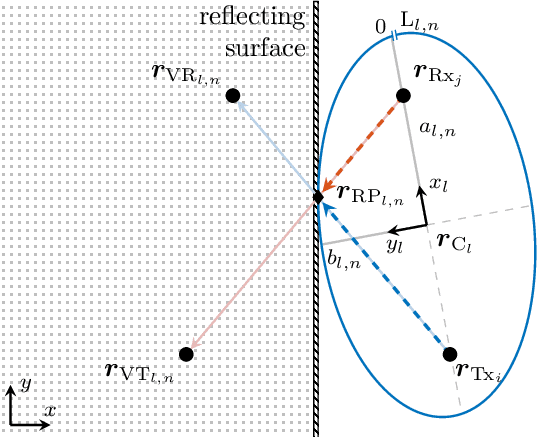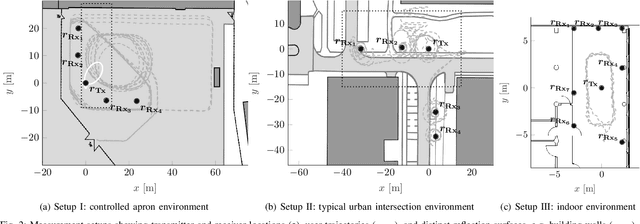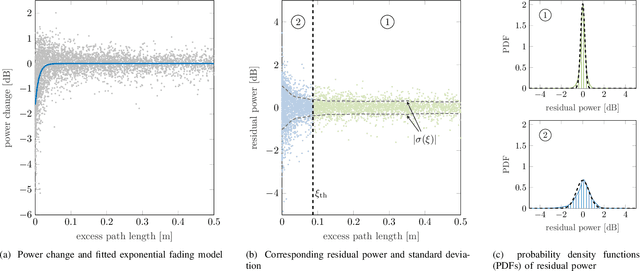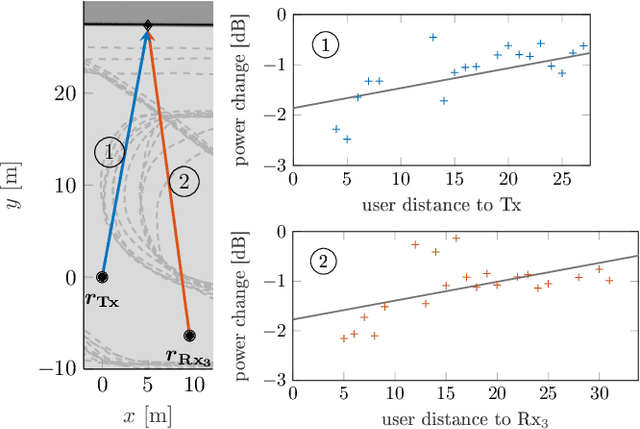Martin Schmidhammer
Mobile-to-Mobile Uncorrelated Scatter Channels
Jul 22, 2024Abstract:In this paper, we present a complete analytic probability based description of mobile-to-mobile uncorrelated scatter channels. The correlation based description introduced by Bello and Matz is thus complemented by the presented probabilistic description leading to a common theoretical description of uncorrelated scatter channels. Furthermore, we introduce novel twodimensional hybrid characteristic probability density functions, which remain a probability density in one of the variables and a characteristic function in the other variable. Such a probability based description allows us to derive a mathematical model, in which the attenuation of the scattering components is inherently included in these two-dimensional functions. Therefore, there is no need to determine the path loss exponent. Additionally, the Doppler probability density function with the inclusion of the path loss leads to a concave function of the Doppler spectrum, which is quite different from the Jakes and Doppler spectra and can be directly parameterized by the velocity vectors and geometry of the scattering plane. Thus, knowing those parameters permits the theoretical computation of the Doppler spectra and temporal characteristic functions. Finally, we present a comparison between the computed probability based theoretical results and measurement data for a generic mobile-to-mobile channel. The agreement between the two shows the usefulness of the probability based description and confirms new shapes of the Doppler power spectra.
Empirical Fading Model and Bayesian Calibration for Multipath-Enhanced Device-Free Localization
May 11, 2022



Abstract:The performance of multipath-enhanced device-free localization severely depends on the information about the propagation paths within the network. While known for the line-of-sight, the propagation paths have yet to be determined for multipath components. This work provides a novel Bayesian calibration approach for determining the propagation paths by estimating reflection points. Therefore, first a statistical fading model is presented, that describes user-induced changes in the received signal of multipath components. The model is derived and validated empirically using an extensive set of wideband and ultra-wideband measurement data. Second, the Bayesian approach is presented, which, based on the derived empirical fading model, relates measured changes in the power of a multipath component to the location of the reflection point. Exploiting the geometric properties of multipath components caused by single-bounce reflections, the solution space of possible locations of reflection points is constrained to the delay ellipse. Thus, a one-dimensional elliptic estimation problem can be formulated, which is solved using a point mass filter. The applicability of the proposed approach is demonstrated and evaluated based on measurement data. Independent of the underlying measurement system, the Bayesian calibration approach is shown to robustly estimate the locations of the reflection points in different environments.
 Add to Chrome
Add to Chrome Add to Firefox
Add to Firefox Add to Edge
Add to Edge